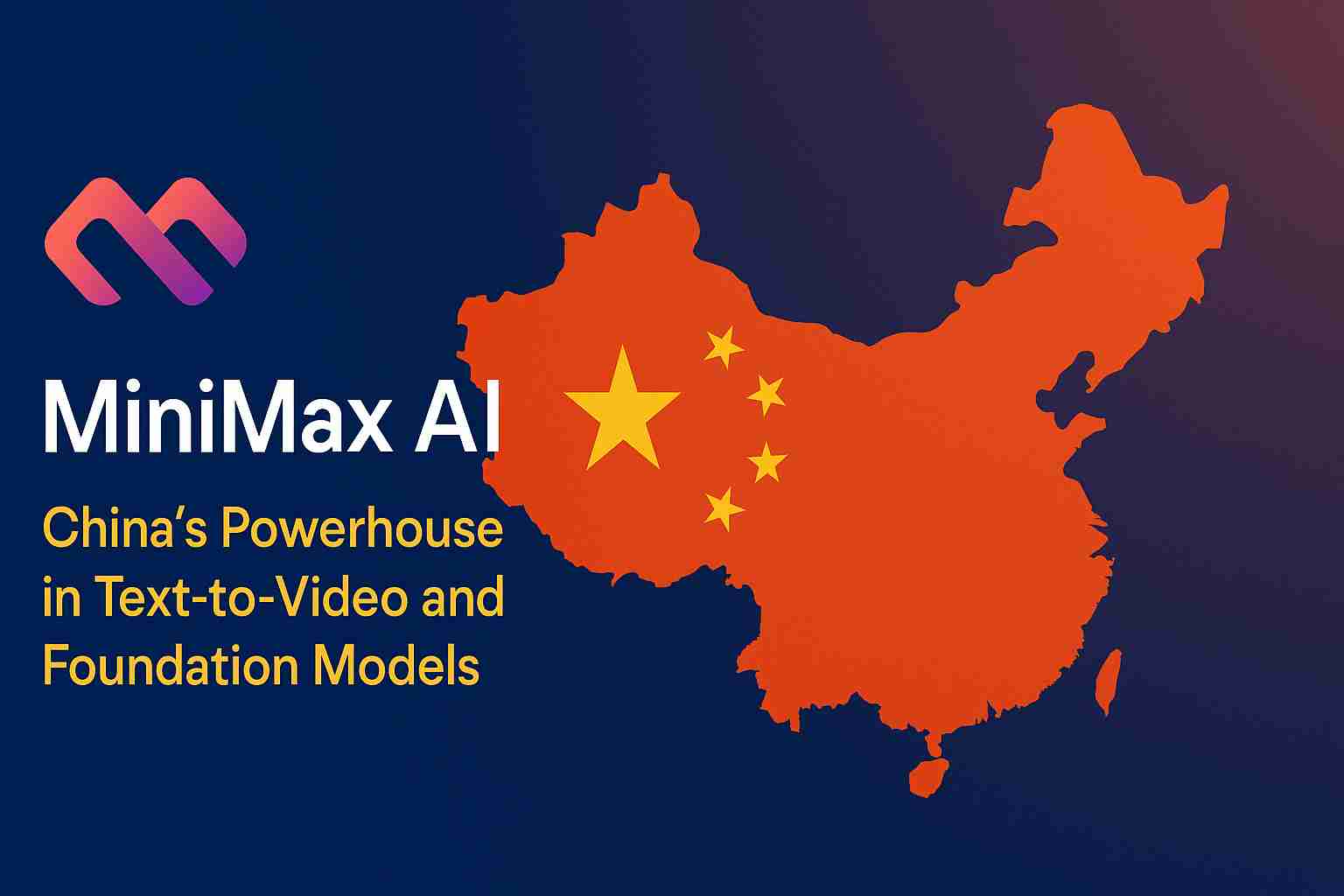MiniMax AI: China’s Powerhouse in Text-to-Video and Foundation Models

Introduction
Ever wondered what it takes to turn simple text into a short, lifelike video? Or how an AI model can handle millions of words at once? That’s the kind of innovation MiniMax AI is pushing forward. Based in Shanghai, it’s caught investor attention as one of China’s “AI Tigers” not just for flashy demos, but for serious technical muscle in video, audio, text, and large-scale model capabilities.
What is MiniMax AI and why is it making waves?
MiniMax AI is a next-generation AI company known for building powerful foundation models and text-to-video tools. It offers video creation from text, high-level reasoning via massive models (like its M1), and emotion-rich multimedia through its Hailuo platform. With attendees impressed by its viral “cat diving” clips and benchmarks rivaling OpenAI and Google, it’s proving there’s more than one top-tier AI lab globally
How does MiniMax AI compare to competitors like Runway and Ideogram?
MiniMax has carved a space alongside tools like Runway and Ideogram, but with a few standout strengths:
- Text-to-video quality: MiniMax generates 720p clips up to 6–10 seconds, using physics-aware animation that outran Google Veo 3 rivals in viral tests
- Cutting-edge foundation models: Its open-source M1 model has 456B parameters and handles up to 1 million tokens huge context windows that rival Gemini and OpenAI’s o3 .
- Multimodal breadth: MiniMax supports text, images, video, audio, and code offering more versatility than many single-focus platforms .
Other tools like Runway excel in artistic video, and Ideogram nails text-on-image, but MiniMax stands out by combining realism with long-form model capability at scale.
What are MiniMax AI’s main strengths and constraints?
Strengths
- Viral-quality video: Realistic motion, physics-aware, accessible creation .
- Huge model context window: Up to a million tokens means Mega long-form input great for documents, long videos, or complex reasoning .
- Open-source approach: M1 is open-weight, making it accessible to researchers and small firms .
- Multimodal lineup: Text, video, image, audio, music an all-in-one platform vision .
Challenges
- Short video length: Max clips around 10 seconds fine for social, too short for long-form .
- Still evolving: Video realism, motion, and audio sync are steadily improving but haven’t peaked yet .
- Global competition: It’s up against giants like Google and OpenAI any slip could affect its momentum.
What do users and reviewers say about MiniMax AI?
Content creators tested MiniMax against rivals like Kling.AI and Runway, declaring it “more cinematic and physics-aware” A recent viral test featured cats doing Olympic dives realistic fur swirl, water effects, believable movement all created in minutes without high costs . On the model front, AI analysts note M1 scores near top open models and is open-source huge for researchers .
Also Read About: Notion AI
FAQ
Q: Can I generate long videos with MiniMax AI?
A: Not yet clips are currently around 5–10 seconds max.
Q: Is MiniMax AI model open-source?
A: Yes the M1 foundation model is open-weight, unlike many closed counterparts.
Q: Does it support text-to-video and image-to-video?
A: Absolutely both formats work, producing 720p, 25 fps outputs.
Q: How does MiniMax compare to Google or OpenAI models?
A: Its video rivals Veo 3 in realism, and its M1 model’s context window is among the largest globally.
Q: Is MiniMax only for Chinese users?
A: No their tools (like Hailuo and Talkie) are used worldwide, with viral content across Western platforms.
Conclusion
MiniMax AI is a rising star in AI not just another chatbot maker, but a powerhouse building multimodal tools and foundation models that challenge global giants. If you’re into AI video creation, deep model research, or wide-scale model innovation, it’s one to watch.
Have you tried creating a quick video or testing its video tools? What did you make, and how did it feel? Drop your creations or questions below I’d love to see what you come up with!






